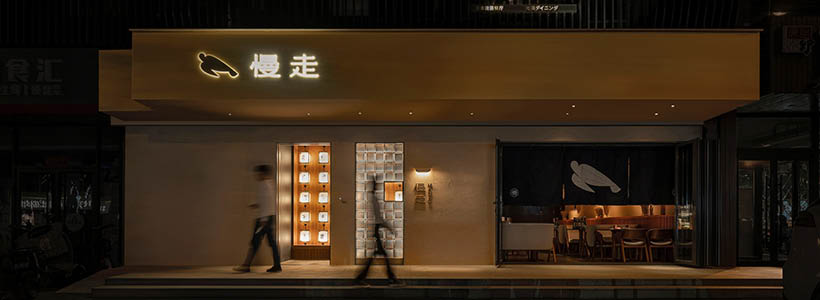
[button link=”https://www.arredanegozi.it/2023/10/il-sapore-del-riso-sake-manzo-pechino/” icon=”none” target=”” color=”a30b0b” textcolor=”ffffff”]TESTO ITALIANO[/button]
Sake MANZO has demonstrated a steadfast commitment to promoting and disseminating the rich and nuanced traditions of Japanese sake culture.
Sake MANZO, designed by UNFOLDESIGN, is located in a lively residential area of Beijing, where people walk and gather at night. With nearly ten years of operation, the space has been facing the need for renovation.
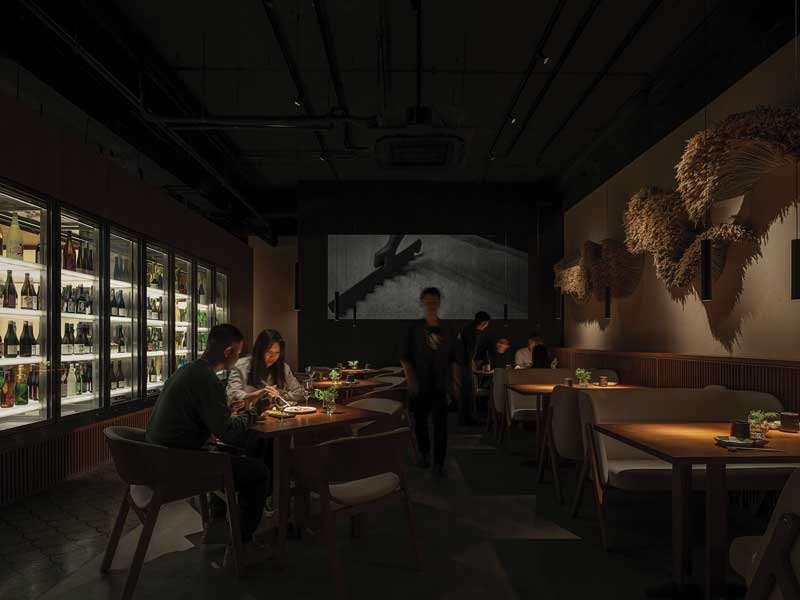
After conducting several site surveys and engaging in extensive communication with the owner, the team discovered that the original space layout and display often made diners more focused on food, thereby disregarding the wide array of sake offerings.
“Sake culture”
The designer’s approach begins with a focus on the “sake culture,” which is reflected in the use of a bespoke sake cabinet that spans nearly three meters in length. This design element effectively divides the space in half, creating two distinct areas for showcasing Japanese sake from both sides. Additionally, the sake cabinet serves as a clever partition that creates two unique dining atmospheres within the same space.
Water is the lifeblood of sake, while rice serves as its structural foundation. The production of sake involves a meticulous brewing process that aims to extract the purest essence of rice. The subtle presence of water and rice, the fundamental ingredients of sake, is perceptible. The design concept’s specific elements have been abstracted into intentional forms of varying dimensions, which manifest themselves in the surrounding space.
The use of the ‘rice husk paint’ material on both the exterior and interior walls creates a warm and elegant tone that highlights the unique texture of the rice core layer. The material’s originality, simplicity, and pleasantness add to the overall aesthetic appeal of the design.
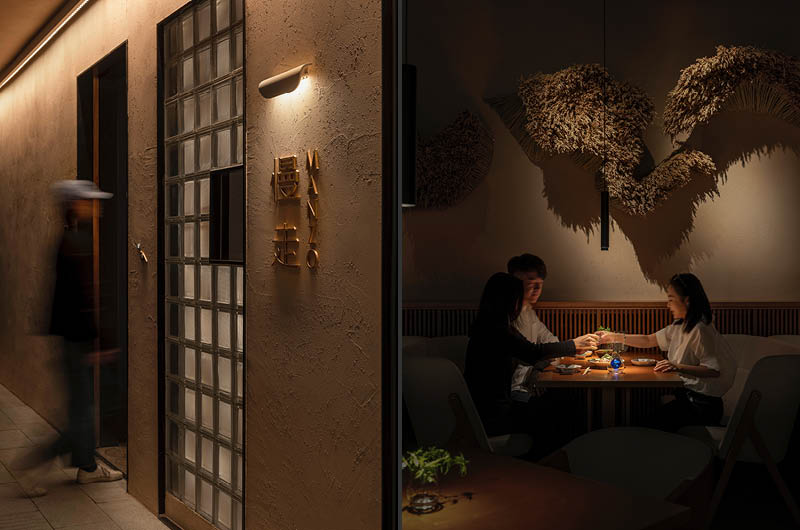
At the entrance, one’s attention is immediately drawn to a meticulously arranged array of lanterns adorning the wall. In Japan, it is customary to hang white lanterns on doorsteps and in shops.
The team continued this tradition, using triangular wooden frames with simple lines to fix the lanterns, integrating modern styles into traditional customs. The shape of the lanterns simulates the sake barrel commonly used in traditional Japanese restaurants, while also providing practical lighting and decorative effects. The names of the sakes that Sake MANZO collaborated with are printed on paper lanterns, subtly attracting diners to ‘read’.
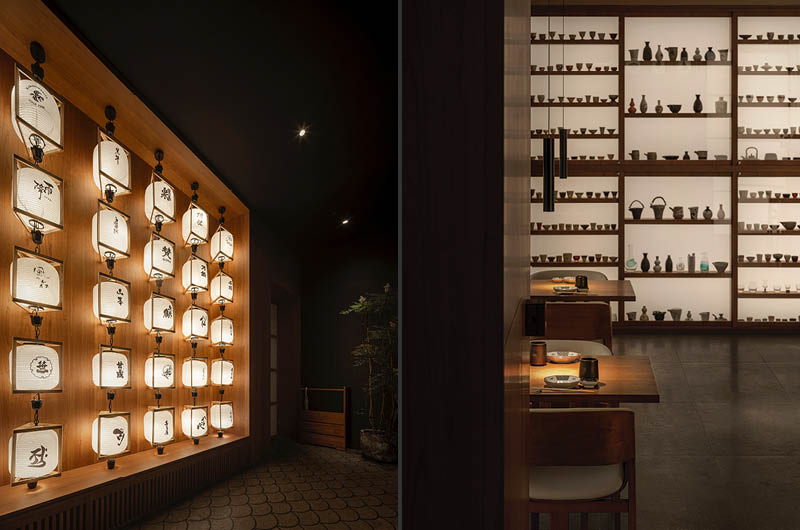
The Nandina domestica, a fortuitous symbol, is positioned at the porch’s end.
Its flat and feather-like leaves, along with its bamboo-like body, contribute to the entrance’s graceful allure. This feature seamlessly guides patrons towards the tranquil and subdued dining area located on the east side. In this design, the structure creates a serene environment that isolates the user from external distractions, allowing for heightened sensory perception of the surrounding environment.
In pleasant weather conditions, the folding doors of the facade can be opened, allowing for a revitalizing influx of fresh air into the interior space. The diners, with a discerning palate, are enveloped by the serene night sky, partially visible through the draped curtains, and are pleasantly stimulated by the ambiance.
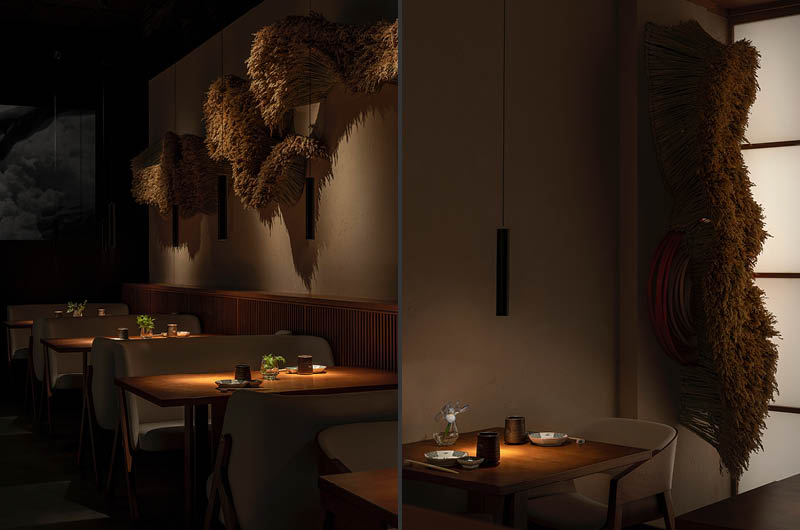
On the opposite end, the western dining area catches the attention with its luminous ambiance and distinct design aesthetic. A refined cabinet is situated in this space, tastefully showcasing a collection of sake cups spanning various historical periods.
Japanese paper
The use of Transparent Washi, a traditional Japanese paper, on the back plate of the design allows for soft and even distribution of light, creating a subtle and hazy ambiance. This design feature also allows for diners to have the freedom to choose their preferred cups for use.
Upon ascending the stairs from the dining area, one is welcomed into the exclusive private room area. While retaining the original structure, the team updated the walls, seats, and decorative displays, providing flexible usage for groups ranging from 2 to 30 people.
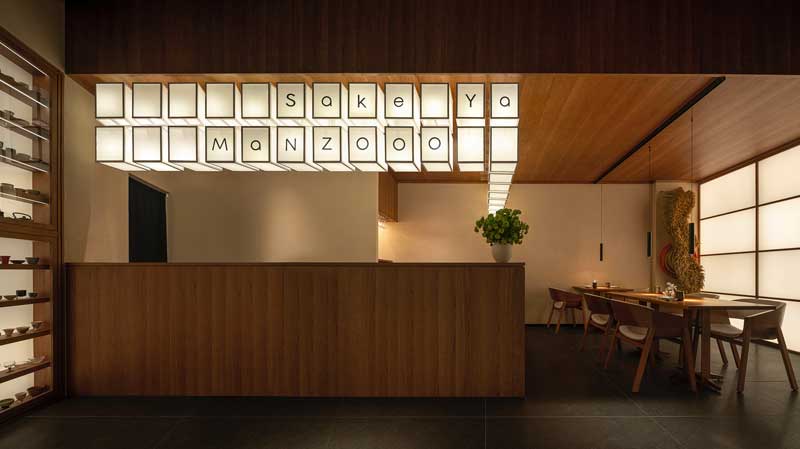
The second floor of the building exudes a sense of seclusion, providing urban residents with a serene environment to indulge in culinary delights and beverages, while also promoting wellness and uninterrupted relaxation.
The space is adorned with intricate details that pay homage to the rich cultural heritage of Japanese cuisine.
The culinary masterpiece that best represents MANZO’s expertise is the renowned Hitsumabushi, also known as Nagoya eel rice. Its unique form and the crucial role of rice in the dish perfectly align with the concept inspiration, making it a standout among Beijing’s culinary offerings.
The design team has incorporated a poetic element into the interior design by considering the concept of ‘drops of water join to make a stream; and ears combine to make a crop’. This has added a sense of tension to the overall aesthetic.
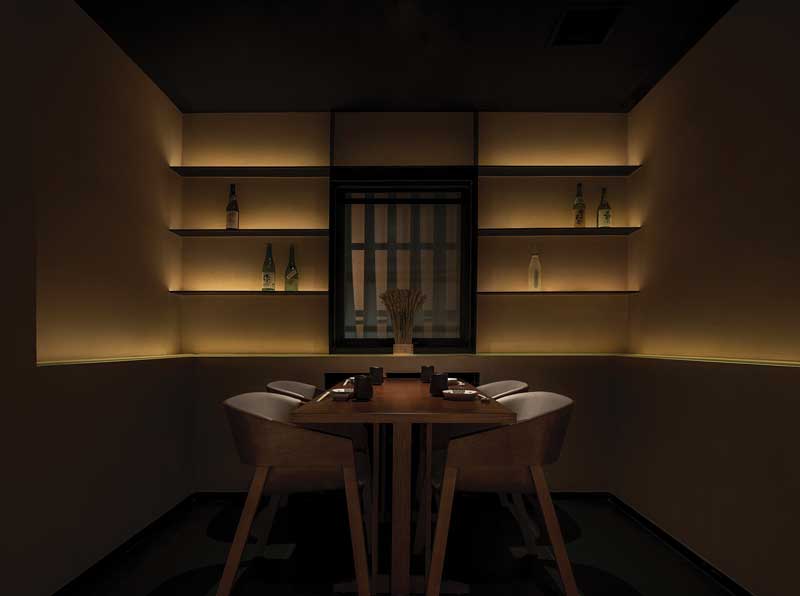
The designer collaborated with flower artist Guan Yue to create a bespoke wall installation for the dining area on the first floor, elevating the overall aesthetic ambiance.
The integration of traditional sake drinking elements such as masu, rice ears, ladles, and burdock grass into the display wall on the second-floor corridor adds a unique touch to the space and enhances the dining experience for diners.
The design of the space, like cuisine, has its reasons and principles.
For a better experience of the food and sake, the designer’s ingenuity needs to permeate every detail of the space. The simple and bright interior layout and the light and delicate design language, inevitably guide the diners’ appetites and carry the infinite emotional spread.
Philosopher Georges Bataille once wrote, ‘These moments of intoxication, when we defy everything, when, the anchor raised, we go merrily toward the abyss, with no more thought for the inevitable fall than for the limits given in the beginning, are the only ones when we are completely free of the ground (of laws)’. UNFOLDESIGN tried to create a unique sample of a city night bar, inviting familiar diners and unexpected crowds to immerse themselves in the night moments.
Location Beijing
Design Company Unfoldesign
Director Queena Qiao
Area 430 sqm
Photos courtesy Topia


